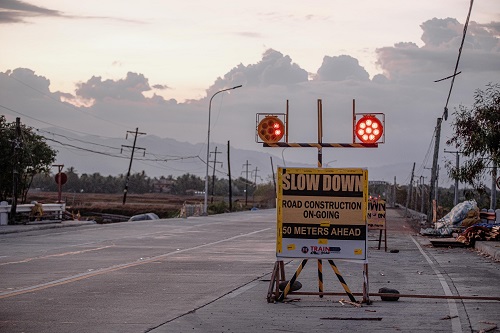Post-Market Surveillance – Responsibilities of Medical Device Manufacturers
Post-market surveillance is a significant part of any medical device manufacturer’s responsibilities, especially since the European Medical Device Regulation (MDR, 2017/745) implementation put an extra focus on post-market surveillance and vigilance activities.
Today we are looking at the specific obligations required of the medical device manufacturer, focusing on a proactive post-market surveillance system that collects feedback and data from various sources and the post-market surveillance process to ensure drug and device safety.
It is important to note that sometimes distributors or other economic operators may need to act on behalf of the manufacturer in specific markets or situations, in which case some of the following will also apply to these entities.

Post-market surveillance plan
Post-market surveillance requirements are described in articles 83-86 of the EU MDR. To comply with these requirements, medical device manufacturers must set up a post-market surveillance plan in such a way that post-market performance and safety can be adequately assessed and analyzed.
The PMS plan should include information on properly collecting and analyzing available post-market data to ensure that medical devices live up to their safety and performance requirements. Different medical devices might require different approaches, but the general requirements for the post-market surveillance plan are described in Annex III.

The EU MDR emphasizes the following in the post-market surveillance plan requirements in section 1.1, article b:
(b) The post-market surveillance plan shall cover at least:
— a proactive and systematic process to collect any information referred to in point (a). The process shall allow a correct characterization of the performance of the devices and shall also allow a comparison to be made between the device and similar products available on the market;
The MDR places significance on the proactivity of the PMS plan. This means that, as a manufacturer, you must proactively collect information and data on the performance and safety of your device – you cannot wait for information to come to you!

Data collection and analysis
The manufacturer decides from which sources to gather post-market surveillance information to comply with the objectives of their post-market surveillance plan.
Data sources typically include adverse event/incident databases and literature searches on the device itself and similar or equivalent medical devices.
Once appropriate data sources have been identified, the next step is considering data analysis. Analyzing data can vary from qualitative analyses to advanced statistical analyses, depending on the device in question and whether you are doing an initial investigation of reported adverse events or performing complete trend analyses.
Using data in other regulatory processes
Post-market surveillance data analysis provides a meaningful snapshot of any changes in device risk or the need to obtain more clinical data, which is why the impact of post-market surveillance data should extend to risk management documentation, quality improvements, and clinical evaluation reports as well.

Implementing actions based on data
Once all the post-market surveillance data has been analyzed and implemented in your related regulatory processes, you will get a clearer picture of whether you need to perform any corrections, corrective actions, or preventive actions.
As a medical device manufacturer, it is your job to consider any and all options to make your device safer and better based on your data.
Collecting post-market information
Feedback from users and patients
One of the most critical parts of a post-market surveillance system, collecting feedback is something a medical manufacturer plans for, regardless of their resources and the classification of their device.
Feedback from users and patients is irreplaceable in understanding how the medical device performs in the field, how safe it is to use, and whether the instructions for use are sufficient for effective and safe use.

Collecting feedbacks
There are many ways to collect user and patient feedback. Still, the most critical step in the feedback process is making it easy for users to provide constructive feedback and report adverse events or adverse reactions. Contact information should be clear on the device labeling, and you can use phone applications, QR codes, or web forms to make it as easy as possible for feedback to reach you.
Adverse events reports and market follow-up by regulatory authorities
Most regulatory authorities will inform medical device manufacturers when they receive user feedback through national vigilance programs and forward their adverse event reports to the manufacturer.
The information contained in adverse event reports should be analyzed equally to the feedback collected directly from users by the manufacturer.
Other feedback sources
Post-market surveillance information can and should be collected from Post-market Clinical Follow-up (PMCF), scientific literature, maintenance, installation crews, and many other sources, such as publicly accessible databases, user training, returned medical devices, and more.

Analyzing feedback and customer complaints about medical devices
Once you have your post-market surveillance data recorded and cataloged, it is time to start analyzing. The purpose of all the collected feedback is to determine if the medical device remains safe and performs as intended.
The International Medical Device Regulators Forum (IMDRF) provides guidance on classifying post-market surveillance feedback into categories which can be helpful when determining if action is required for a particular problem.
When your data has been categorized, it is time to determine whether a device problem should be reported to the national authority.
Manufacturers should notify the regulatory authority in the following cases:
- Discovery of a serious public health threat
- Death or serious deterioration in the health of a patient or user
- Potential death or serious deterioration in the health of a patient or user if the problem occurs again
To establish if the medical device was directly implicated in the incident, it is important to perform a root cause analysis – what happened, how and why did it happen, and will it happen again? The root cause analysis aims to prevent the incident from happening again.

The root cause analysis will help you determine if a correction, corrective action, or preventive action is needed. You can read more about corrective and preventive actions in our article on CAPAs.
Once the appropriate actions have been taken to avoid the incident or device problem recurrence, follow-up should be performed with the national authorities and/or distributors involved. The incident report can be closed when all required actions have been implemented.
Any medical device manufacturer is responsible for ensuring compliance and safety for their devices once they have been released into the market. Post-market surveillance is not a one-and-done task; it is a continuous process required throughout the entire medical device lifecycle (and sometimes beyond).
Read more…
You can read more about post-market surveillance of medical devices in our articles on post-market surveillance under the MDR, MDR post-market surveillance compared to the IVDR, and the relationships between literature search and clinical evaluation reports, PMS Vigilance, PMCF, and PSURs.
